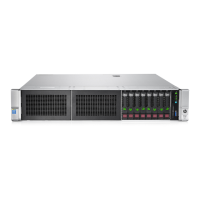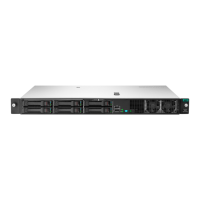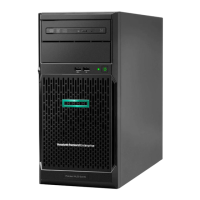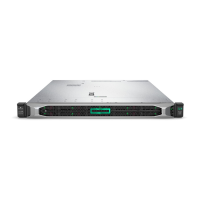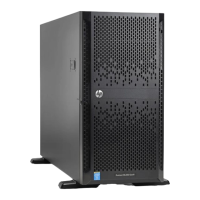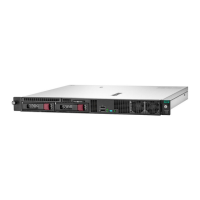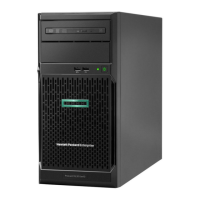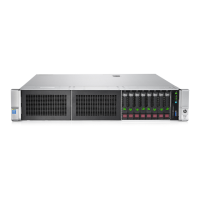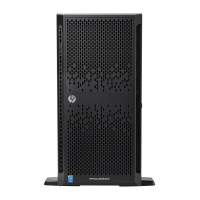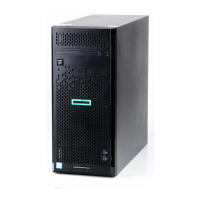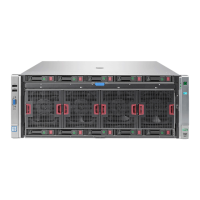Do you have a question about the HPE ProLiant and is the answer not in the manual?
Overview of Intelligent Provisioning as a server deployment tool.
Lists applications automatically installed with Intelligent Provisioning.
Details features accessible via F10 or remote console.
Explains functions performable when the server is off or running.
Describes the components and requirements of Intelligent Provisioning.
How to move through the menu-driven interface.
Procedure to access IP via the iLO web interface.
Procedure to access IP via iLO remote console session.
Steps to select and use F10 mode for Intelligent Provisioning.
Guide to initial setup and configuration of Intelligent Provisioning.
Wizard to guide system preferences during the first run.
Steps to re-enable Intelligent Provisioning after disabling.
Methods for reinstalling Intelligent Provisioning.
Procedure to reinstall using an ISO image.
Procedure to reinstall using an RPM package for Linux.
Steps for configuring hardware and installing OS using IP.
Notes on server compatibility and character usage.
Details supported OS installation media and methods.
Steps to select the source for OS installation.
Settings required for OS configuration during installation.
How to configure RAID controllers and logical drives.
Steps to select OS drive and set partitions.
Guides for manual partition setup for different OS.
Procedure to update server firmware using Intelligent Provisioning.
Confirming deployment settings before OS installation.
Considerations during installation and configuration process.
Explanation of different RAID array types and their benefits.
Details of RAID 0 configuration, benefits, and requirements.
Explanation of RAID 1 and RAID 10 configurations.
Explanation of RAID 5 configuration, benefits, and requirements.
Explanation of RAID 50 configuration, benefits, and requirements.
Explanation of RAID 6 configuration, benefits, and requirements.
Explanation of RAID 60 configuration, benefits, and requirements.
Procedure to update server firmware using Intelligent Provisioning.
How to check the current version of Intelligent Provisioning.
How to change basic preferences for Intelligent Provisioning.
Procedure to download AHS log files for problem resolution.
Procedure to upload AHS logs to the AHSV.
Create and deploy server configuration packages.
Steps to create a new or edit an existing deployment package.
Deploying a configuration package to a single server.
Description of icons for managing deployment settings.
How to change system configurations via BIOS/RBSU.
Options for configuring iLO settings from Intelligent Provisioning.
Managing user permissions and accounts for iLO.
Options for resetting iLO configuration.
Step-by-step guide to create storage arrays via advanced mode.
Instructions for configuring existing storage arrays/logical drives.
How to use the hardware validation tool for system testing.
Methods to initiate the One-button secure erase process.
Prerequisites and steps to start the secure erase process.
Steps to return the system to an operational state post-erase.
How to access and manage the secure erase report.
Procedure to save the erase report as a CSV file.
How to delete the erase report from the iLO interface.
Effects of secure erase on system components and settings.
List of components reset to factory state by secure erase.
List of components unaffected by secure erase.
Frequently asked questions about One-button secure erase.
Details on how secure erase impacts different drive types.
Options available in the System Erase and Reset menu.
Capabilities and modes of the Smart Storage Administrator utility.
Methods to launch and access Smart Storage Administrator.
How to configure RAID controllers and other settings in SSA.
How to run diagnostic reports using SSA.
Requirements for using the USB Key Utility.
Steps to create a bootable USB key for IP or SPP.
General techniques for troubleshooting Intelligent Provisioning.
Common issues and their solutions with Intelligent Provisioning.
Troubleshooting iLO logon issues during F10 boot.
Solutions for IP not launching when F10 is pressed.
Troubleshooting issues with AOIP reimaging.
How to find version information in deployment settings.
Troubleshooting issues with custom partition creation.
Solutions for IP failing to launch One-Button secure erase.
Troubleshooting errors during One-Button secure erase.
Solutions for Red Hat OS assisted installation hangs.
Resolving issues with missing USB storage drivers.
Troubleshooting server reboots during VMware assisted installation.
How to access HPE support and documentation.
Procedures for downloading software updates and patches.
Information about HPE remote support services.
Information on Hewlett Packard Enterprise customer self repair programs.
Links to view warranty information for HPE products.
Information on safety, compliance, and environmental regulations.
How to provide feedback on the documentation.
| Product Line | ProLiant |
|---|---|
| Manufacturer | HPE |
| Category | Server |
| Processor Options | Intel Xeon, AMD EPYC |
| Memory Capacity | Up to several TB (depending on model) |
| Storage Options | SAS, SATA, NVMe, SSD, HDD |
| Form Factor | Tower, Rack, Blade |
| Networking | Ethernet, Fibre Channel, InfiniBand |
| Management | iLO (Integrated Lights-Out) |
| Operating System Support | Windows Server, Linux, VMware |
